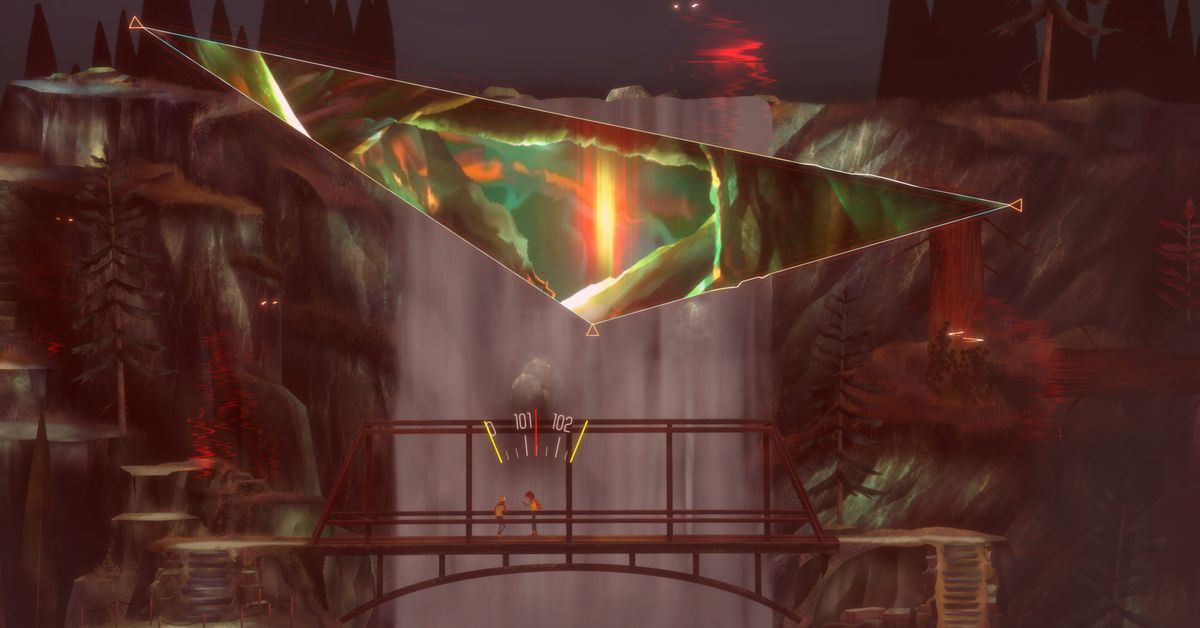Oxenfree II: Lost Signals review: a perfect spooky sequel
When the original Oxenfree debuted in 2016, it was hard not to make Stranger Things comparisons: from the synth-heavy soundtrack to its story of kids grappling with the supernatural, the vibes were very similar. So it made a lot of sense when, in 2021, Netflix acquired Oxenfree developer Night School Studio as part of its burgeoning games effort. Now we have Oxenfree II: Lost Signals, which is an ideal sequel: it’s another creepy adventure game that stands on its own but also builds on the original in smart ways. It might also be the best video game released under the Netflix label so far.
As a game, not much has changed in Lost Signals. It’s a 2D adventure where you wander around a beautiful small town, doing lots of talking and fiddling with radios in order to commune with paranormal forces. The story is where things have progressed. The first game followed a group of friends, led by a teen girl named Alex, who accidentally opened a portal to another realm while partying on a nearly deserted island. Lost Signals takes place a few years later and puts players in the role of Riley, a 30-something who has returned to her hometown Camena after a long time away.
The entire game unfolds over the course of an evening, with Riley taking on a new job as an “environmental researcher.” She’s partnered with a chatty high school friend named Jacob, and it’s not very long before the two have to deal with things that aren’t quite right. When a giant triangle appears over Edwards Island — the setting of the original Oxenfree — it seems to create a hole in the sky, and the pair set about placing transmitters across Camena in hopes of sealing the hole and avoiding whatever supernatural disaster might be lurking inside.
Things get a lot weirder from there. As the two set about their quest, they run into time loops, an obsessive cult, and some very jarring flashbacks about the history of the island. At first, the story doesn’t seem to have much to do with the original characters, but midway through, they connect in a very clever way. It’s great for fans of the original, but it’s also done in a way that means you don’t have to play the original Oxenfree before Lost Signals (though you probably should).
As with the original, the gameplay is relatively simple. You spend a lot of time trekking through hiking trails talking, and the free-flowing dialogue system returns so that conversations move in a surprisingly natural way. Basically, conversations don’t stop so you can do other things; you’ll continue talking while climbing hills or exploring winding pathways. At most points in the game, you’re doing two pretty straightforward things — walking and talking — but when you put them together, it’s enough to keep you busy.
You can make choices, though — with the exception of a major one at the end — I’m not sure how much they influence the way things actually play out. In addition to Jacob and a few cult members you’ll encounter, you can chat with a number of characters over a walkie-talkie, including your supervisor, a lonely old man, and a few more surprises. If you don’t like overly chatty games, be warned: Oxenfree II will not be for you. But the dialogue is charming and witty, and I loved it as much as in the original.
Image: Netflix
Other than that, you have access to a radio tuner, which is used to solve some straightforward puzzles. Turning into the right channel can open certain old military locks or shut down portals to other dimensions. Lost Signals also introduces a new feature where you can explore rifts in time, using the past as a way to navigate the present. Again, it’s all fairly simple — I didn’t get stuck once — but it’s pretty satisfying and fun. I especially loved seeing the various states of the town over the years.
For the most part — and again, this is the same as the first game — Lost Signals trades on vibes. It looks and sounds incredible, and as you get deeper into its mystery, it gets downright creepy, with lots of floating bodies and distorted voices to make it clear that something very wrong is going down. It’s also a game that doesn’t overstay its welcome; it lasts just a few hours, enough to tell a complete story and tie up its loose ends.
It’s also the kind of game that seems to make a lot of sense for Netflix: a narrative-focused experience with the potential to be adapted into something else. (Developer Night School even previously worked on a canceled Stranger Things project.) The streamer has started its gaming efforts very slowly, and while there have been a few excellent titles — ranging from original experiences like Laya’s Horizon to ports of games like Kentucky Route Zero — Oxenfree’s sequel represents something very different.
It’s not only a great game — it’s one developed internally at Netflix, possibly pointing to what we can expect as the company expands its efforts.
Source: The Verge


